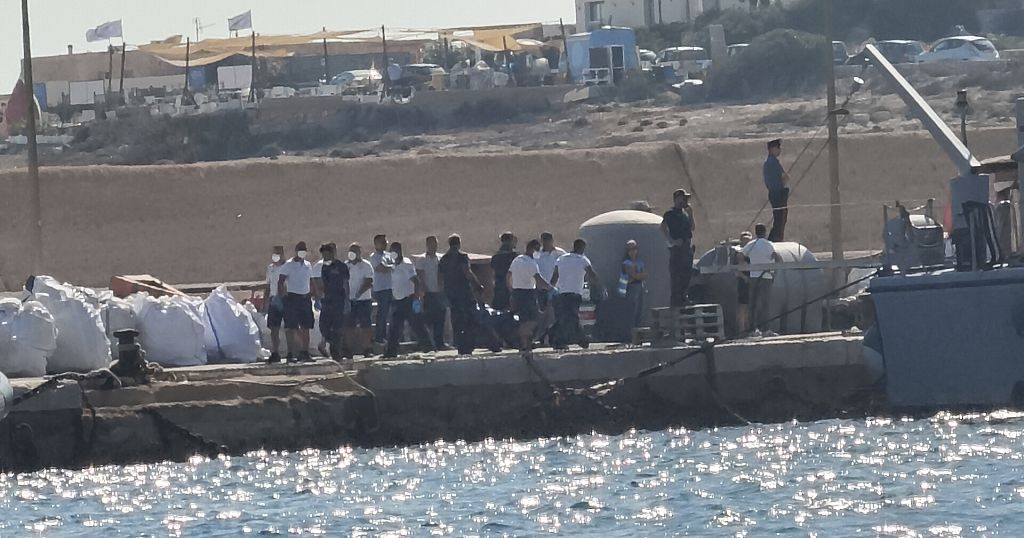At least 27 migrants, including an infant and three children, died off the coast of southern Italy after two overcrowded vessels capsized in the Mediterranean Sea. The boats, which departed from Libya, sank approximately 14 miles from the Italian island of Lampedusa on Wednesday. Survivors reported fleeing conflict zones and economic hardship in search of safety in Europe.
Sixty people were rescued in the aftermath, according to Italian authorities, with 21 unaccompanied minors from Pakistan, Egypt, Somalia, and Sudan among those brought to Lampedusa’s overcrowded migrant reception center. Search efforts for more than 15 missing individuals resumed at dawn on Thursday, though hopes of finding survivors dwindled as hours passed. The victims included individuals from unidentified North African and Middle Eastern nations, highlighting the diverse origins of those risking the perilous journey.
The tragedy unfolded amid a sharp rise in arrivals to the small Italian island, a frequent first point of entry for migrants crossing from North Africa. Just hours after the capsizing, three additional boats carrying over 100 people reached Lampedusa’s shores overnight, straining local resources. The recent influx underscores the relentless flow of migration despite repeated warnings from aid groups about the dangers of the central Mediterranean route, which claims thousands of lives annually.
Humanitarian organizations have long described this maritime corridor as one of the deadliest in the world, citing unseaworthy vessels, opportunistic smugglers, and insufficient rescue operations as compounding risks. Over 1,200 migrants have died or gone missing in the Mediterranean this year alone, according to UN data, with many victims succumbing to rough seas, dehydration, or boat malfunctions.
While European nations debate migration policies and border controls, the frequency of such incidents reveals a systemic failure to address root causes driving displacement, from armed conflicts to climate-linked poverty. Lampedusa’s reception center, designed to accommodate 400 people, currently shelters over 1,500 migrants, officials confirmed, reflecting the urgent need for coordinated regional responses.
As recovery teams continued scouring the waters Thursday, survivors recounted harrowing scenes of the boats taking on water, with panicked passengers—many unable to swim—clinging to debris. The infant who perished was reportedly born during the voyage, a detail that has drawn renewed attention to the vulnerabilities facing pregnant women and children on these journeys.
The incident marks one of the deadliest shipwrecks in the Mediterranean this year, reviving calls for expanded rescue missions and safer pathways for asylum seekers. With migration trends showing no sign of slowing, advocates stress that without systemic solutions, such tragedies will remain a grim feature of Europe’s southern borders.
